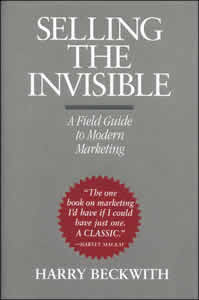
Photo by Sherman
I read with great interest the article “Burt’s Bees, Tom’s of Maine, Naked Juice: Your Favorite Brands? Take Another Look — They May Not Be What They Seem“. Andrea Whitfil does a great job unearthing how many natural and organic brands that we perceive as being produced by small companies are in reality now owned by large multinational corporations. And she’s very bothered by the deception.
When you offer a product or service, you’re actually making two separate promises: a primary logical offering and a secondary branding promise. The logical offering addresses the reason someone would choose your offering: price, speed, cost, efficiency, resources, quality of life, etc. These benefits are easily measured: how much faster/cheaper/better/bigger is your business or life.
The branding promise is much more subtle. Purchasing the offering will create a feeling in the buyer. They’ll feel like they’re now part of a specific community. They’ll feel better about them self. It will create an emotional reaction to making the purchase. The emotion may not make logical sense, but the feeling it produces is real enough.
What Andrea is complaining about is that many products have broken the branding promise. Andreas felt that she was supporting small businesses that were working hard to make a difference to the planet. Purchasing those small business products made her feel better about herself (and a belief she was helping others continue this worthy mission), so she embraced the product and the mission of the business.
Let’s say that you’re selling a successful product with a primary (logical) benefit and also have a great branding message that goes along with the product. And something happens that changes the story (it’s now made offshore, etc.). The product is made with the same exacting standards. Should you now change the branding message and risk sacrificing your success?
The large corporations that Andrea mentions decided to keep the branding message and hide their affiliation. Andrea would probably not be as upset with the duplicity if the products had updated their story to say something like, “Making a well-intentioned product is only good if it also produces a good livelihood. We didn’t have the resources to share the product with the whole world, so we sold our company. We make sure that they are also putting the same quality into their product as we did (even at a larger scale). If enough people buy these high-quality products, increasing profitability, then companies will see the bottom-line and change their values as well.”
Remember that some buyers look for stories when considering products. Some buyers look for products when considering communities.When all things are equal with a product, people look for differentiators. Your well-crafted branding story can be a key differentiator to attract buyers.



